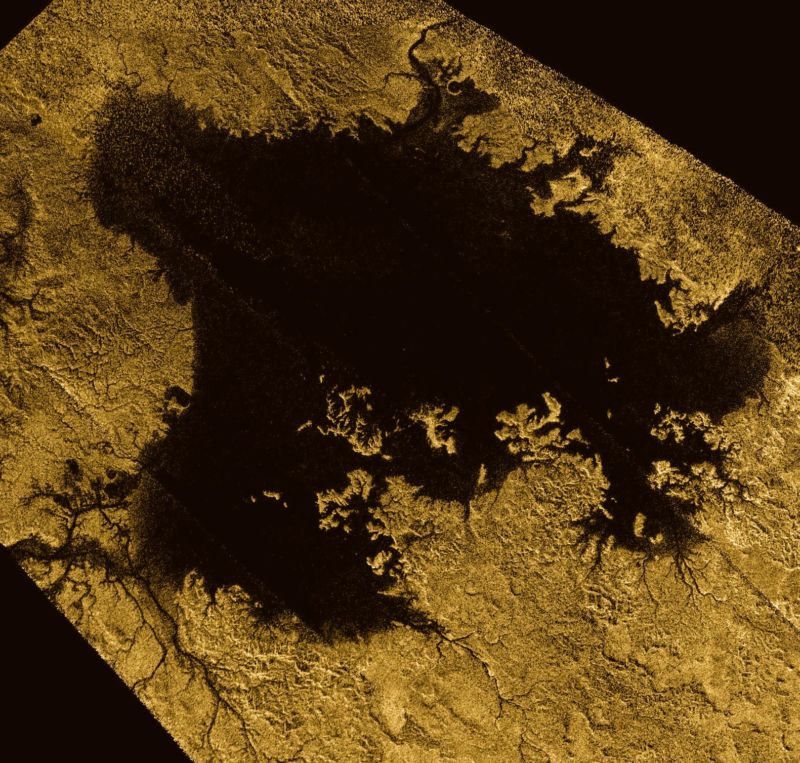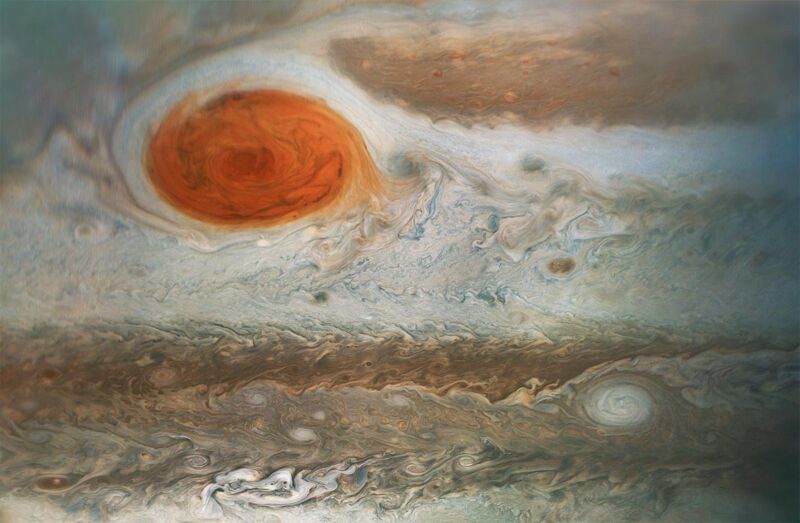‘The Mehta Boys,’ ‘The Rana Daggubati’ Show to Give Prime Video Prominent Position in Goa











Enlarge / Ligeia Mare, the second-largest body of liquid hydrocarbons on Titan. (credit: NASA/JPL-Caltech/ASI/Cornell)
During its T85 Titan flyby on July 24, 2012, the Cassini spacecraft registered an unexpectedly bright reflection on the surface of the lake Kivu Lacus. Its Visual and Infrared Mapping Spectrometer (VIMS) data was interpreted as a roughness on the methane-ethane lake, which could have been a sign of mudflats, surfacing bubbles, or waves.
“Our landscape evolution models show that the shorelines on Titan are most consistent with Earth lakes that have been eroded by waves,” says Rose Palermo, a coastal geomorphologist at St. Petersburg Coastal and Marine Science Center, who led the study investigating signatures of wave erosion on Titan. The evidence of waves is still inconclusive, but future crewed missions to Titan should probably pack some surfboards just in case.
While waves have been considered the most plausible explanation for reflections visible in Cassini’s VIMS imagery for quite some time, other studies aimed to confirm their presence found no wave activity at all. “Other observations show that the liquid surfaces have been very still in the past, very flat,” Palermo says. “A possible explanation for this is at the time we were observing Titan, the winds were pretty low, so there weren’t many waves at that time. To confirm waves, we would need to have better resolution data,” she adds.

Enlarge / Enhanced Juno image of Jupiter’s Great Red Spot in 2018. It is likely not the same one observed by Cassini in the 1600s. (credit: Gerald Eichstadt and Sean Doran/CC BY-NC-SA)
The planet Jupiter is particularly known for its so-called Great Red Spot, a swirling vortex in the gas giant's atmosphere that has been around since at least 1831. But how it formed and how old it is remain matters of debate. Astronomers in the 1600s, including Giovanni Cassini, also reported a similar spot in their observations of Jupiter that they dubbed the "Permanent Spot." This prompted scientists to question whether the spot Cassini observed is the same one we see today. We now have an answer to that question: The spots are not the same, according to a new paper published in the journal Geophysical Research Letters.
“From the measurements of sizes and movements, we deduced that it is highly unlikely that the current Great Red Spot was the ‘Permanent Spot’ observed by Cassini,” said co-author Agustín Sánchez-Lavega of the University of the Basque Country in Bilbao, Spain. “The ‘Permanent Spot’ probably disappeared sometime between the mid-18th and 19th centuries, in which case we can now say that the longevity of the Red Spot exceeds 190 years.”
The planet Jupiter was known to Babylonian astronomers in the 7th and 8th centuries BCE, as well as to ancient Chinese astronomers; the latter's observations would eventually give birth to the Chinese zodiac in the 4th century BCE, with its 12-year cycle based on the gas giant's orbit around the Sun. In 1610, aided by the emergence of telescopes, Galileo Galilei famously observed Jupiter's four largest moons, thereby bolstering the Copernican heliocentric model of the solar system.
Updated with return to full operational status, removal of obsolete COVID-19 page links, and updates to Do Not Travel Areas.
Reconsider travel to Nigeria due to crime, terrorism, civil unrest, kidnapping, and armed gangs. Some areas have increased risk. Read the entire Travel Advisory.
Do Not Travel to:
Country Summary:
Violent crime – such as armed robbery, assault, carjacking, kidnapping, hostage taking, roadside banditry, and rape – is common throughout the country. Kidnappings for ransom occur frequently, often targeting dual national citizens who have returned to Nigeria for a visit, as well as U.S. citizens with perceived wealth. Kidnapping gangs have also stopped victims on interstate roads.
Terrorists continue plotting and carrying out attacks in Nigeria. Terrorists may attack with little or no warning, targeting shopping centers, malls, markets, hotels, places of worship, restaurants, bars, schools, government installations, transportation hubs, and other places where crowds gather. Terrorists are known to work with local gangs to expand their reach.
There is civil unrest and armed gangs in parts of Southern Nigeria, especially in the Niger Delta and Southeast regions. Armed criminality and gangs, including kidnapping and assaults on Nigerian security services is also pervasive in this region.
Violence can flare up between communities of farmers and herders in rural areas.
The U.S. government has limited ability to provide emergency services to U.S. citizens in many areas of Nigeria due to security conditions.
Read the country information page for additional information on travel to Nigeria.
If you decide to travel to Nigeria:
Borno, Yobe, Kogi, and Northern Adamawa states – Level 4: Do Not Travel
The security situation in these states is fluid and unpredictable due to widespread terrorist activity, inter-communal violence, and kidnapping. Security operations to counter these threats may occur without warning.
Terrorist groups based in the Northeast routinely target humanitarian camps, security forces, churches, schools, mosques, government installations, educational institutions, entertainment venues, and road travelers.
Approximately two million Nigerians have been displaced as a result of the violence in Northeast Nigeria.
Visit our website for Travel to High-Risk Areas.
Bauchi, Gombe, Kaduna, Kano, Katsina, Sokoto and Zamfara states – Level 4: Do Not Travel
The security situation in these states is fluid and unpredictable due to widespread inter-communal violence and armed criminality, especially kidnapping and roadside banditry. Security operations to counter these threats may occur without warning.
Visit our website for Travel to High-Risk Areas.
Abia, Anambra, Bayelsa, Delta, Enugu, Imo, and Rivers states (with the exception of Port Harcourt) – Level 4: Do Not Travel
Crime is rampant throughout Southern Nigeria, and there is a heightened risk of kidnapping, violent civil unrest, and armed gangs.
Visit our website for Travel to High-Risk Areas.